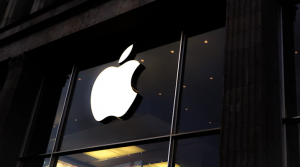The Genius Behind Foodie Data: Q&A with Food Genius CEO Justin Massa
![]() If you know anything about Walmart, you know their in-store cameras track your every move, feeding the mega-store enough data to help them design aisles, strategically place products and even play the right music. There’s an enormous amount of data in the grocery industry alone, and moving down the line, from supply and demand to shipping costs and schedules, organic movements and flavor du jour, there’s a great deal of planning that goes into every grocery run we make.
If you know anything about Walmart, you know their in-store cameras track your every move, feeding the mega-store enough data to help them design aisles, strategically place products and even play the right music. There’s an enormous amount of data in the grocery industry alone, and moving down the line, from supply and demand to shipping costs and schedules, organic movements and flavor du jour, there’s a great deal of planning that goes into every grocery run we make.
Then there’s the data yet to be uncovered, tapping social networks and restaurant reviews for food-related insight, and layering in public data for context. It seems social media in particular has turned us all into a foodie, promoting a population of paleo connoisseurs and adventurous mixologists.
And that’s where Food Genius comes in. This startup is taking on the world’s data to reveal the collective about our food preferences, turning to countless data sources with the goal of improving the food industry as well as the consumer experience. There’s something genius in every data set, as Food Genius CEO and founder Justin Massa sets out to combine eating habits with consumer spending to reveal the true behavior behind our love affair with food.
In today’s Snapshot Series, Massa discusses the big data behind the food industry, how it all benefits the business and consumer, and even shares a bit of his best food porn.
How can big data innovate the grocery industry?
The grocery industry has long leveraged data to manage logistics supply chain issues as well as understanding consumer behavior in the grocery store. The other half of how consumers spend their food budget – the “out of home” spend – is a virtual black hole. This is where Food Genius focuses its efforts, on understanding how consumers are behaving in restaurants, how that is changing over time, and how is this behavior reflected in the changes of restaurant menus.
Who benefits more from FoodGenius – business or consumer?
![]() We feel that both benefit through a symbiotic relationship. For businesses, they’re able to access high quality data about consumers and their behavior around restaurants to predict demand, spot trends, develop marketing campaigns, and stay on the cutting edge. For consumers, Food Genius empowers them to more quickly connect with the foods that they love.
We feel that both benefit through a symbiotic relationship. For businesses, they’re able to access high quality data about consumers and their behavior around restaurants to predict demand, spot trends, develop marketing campaigns, and stay on the cutting edge. For consumers, Food Genius empowers them to more quickly connect with the foods that they love.
That said, it’s important to note that Food Genius does not have consumer-facing products. Rather, we work with consumer-facing apps and services to improve their existing data and improve personalization.
See the entire CEO Series with Kristen Nicole on Pinterest and Springpad!
.
The best data source for food notes?
An excellent question – the short answer is that it all depends on the use case. If you’re looking to understand consumer assessments of the healthiness of food, then it’s The Eatery (by Massive Health) or Weight Watchers. If you’re diving into the minutiae of menu item trends in a small geography, then GrubHub’s menu data is a standout.
When it comes to applied science in groceries, what gives you confidence in the future?
More than anything, it’s the rapidly growing number of companies in this space. We keep a close eye on the sector, and a slew of awesome entrepreneurs are working on some exciting solutions to problems across the spectrum. Consumers are spending more than $1.1trillion/year on food, so there’s lots of space to play.
Two of our favorites are Shopwell and InContext Solutions – radically different companies, but both leveraging data in some fascinating ways.
FOODIE GENIUS
JUSTIN MASSA
Ideal picnic meal?
Pressed roasted red pepper, mozarella, and pesto sandwiches; curry potato salad; vodka cranberry and lime lemonades.
Best food porn from your camera reel? (see above)
This is a tough one, but I’d have to say the Foie Gras Brioche French Toast from Norma’s in NYC. Probably the most decadent breakfast I’ve ever had.
Most overpriced grocery item?
Pine nuts. I’ll never understand why they cost so much (or why they’re so easy to burn).
A message from John Furrier, co-founder of SiliconANGLE:
Your vote of support is important to us and it helps us keep the content FREE.
One click below supports our mission to provide free, deep, and relevant content.
Join our community on YouTube
Join the community that includes more than 15,000 #CubeAlumni experts, including Amazon.com CEO Andy Jassy, Dell Technologies founder and CEO Michael Dell, Intel CEO Pat Gelsinger, and many more luminaries and experts.
THANK YOU

















